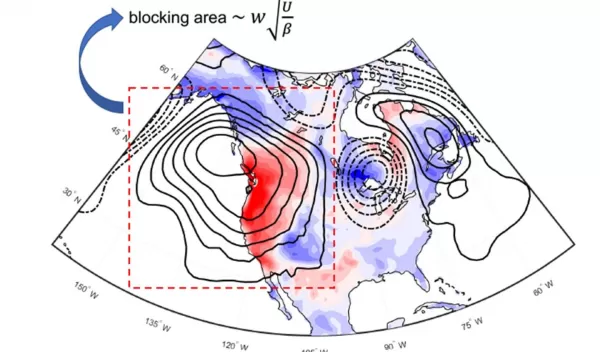
Stalled weather patterns will get bigger due to climate change
Climate change will increase the size of stalled high-pressure weather systems called "blocking events," which have already produced some of the 21st century's deadliest heat waves, according to an NSF-funded study by Rice University researchers.
Atmospheric blocking events are middle-latitude, high-pressure systems that stay in place for days or even weeks. Depending on when and where they develop, blocking events can cause droughts or downpours and heat waves or cold spells. Blocking events caused deadly heat waves in France in 2003 and in Russia in 2010.
Using data from two sets of comprehensive climate model simulations, Rice scientists Ebrahim Nabizadeh and Pedram Hassanzadeh and colleagues found that the area of blocking events in the Northern Hemisphere will increase by as much as 17% due to human-caused climate change.
The results are published in the journal Geophysical Research Letters.
"Studies in the past have looked at whether you get more or fewer blocking events with climate change," Hassanzadeh said. "The question nobody had asked is whether the size of these events will change. And the size is very important. If the high-pressure system becomes bigger, you are going to get bigger heat waves that affect more people, and you are likely going to get stronger heat waves."
"When it comes to blocking, size definitely matters. It's surprising that no one had looked at size before, as size affects the number of people impacted and the severity of the effects," said Eric DeWeaver, a program director in NSF's Division of Atmospheric and Geospace Sciences.
